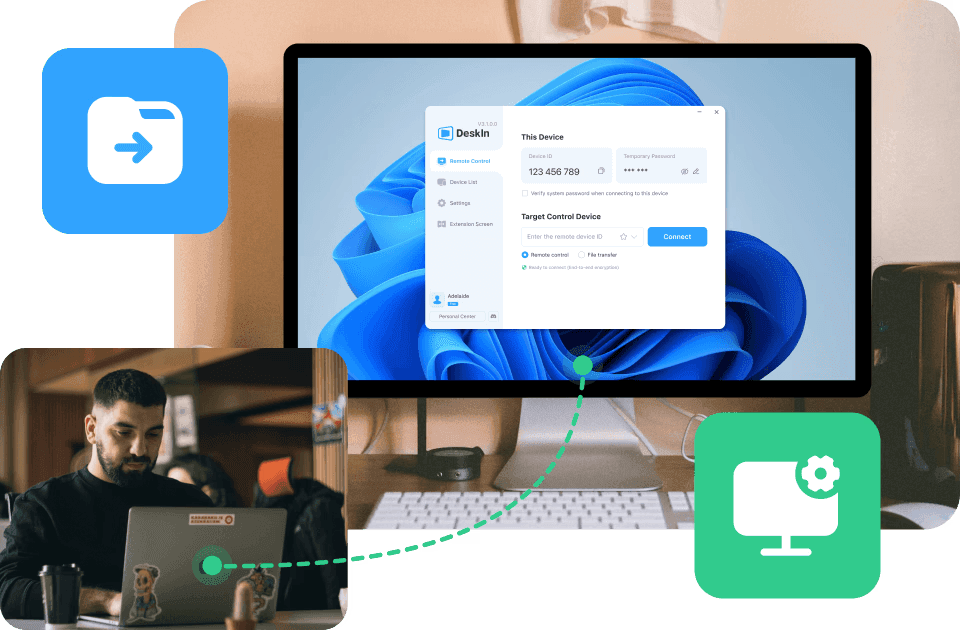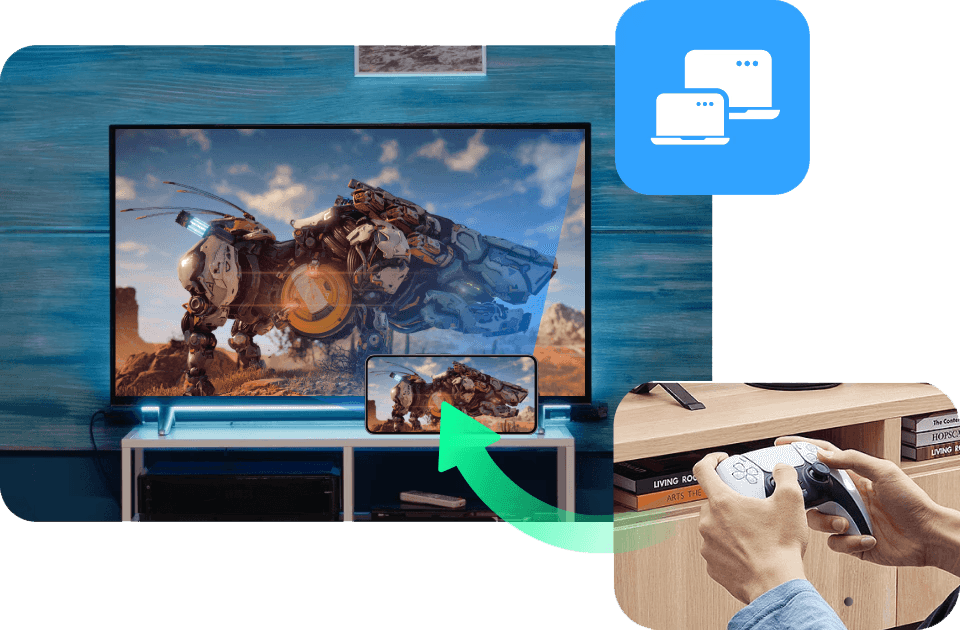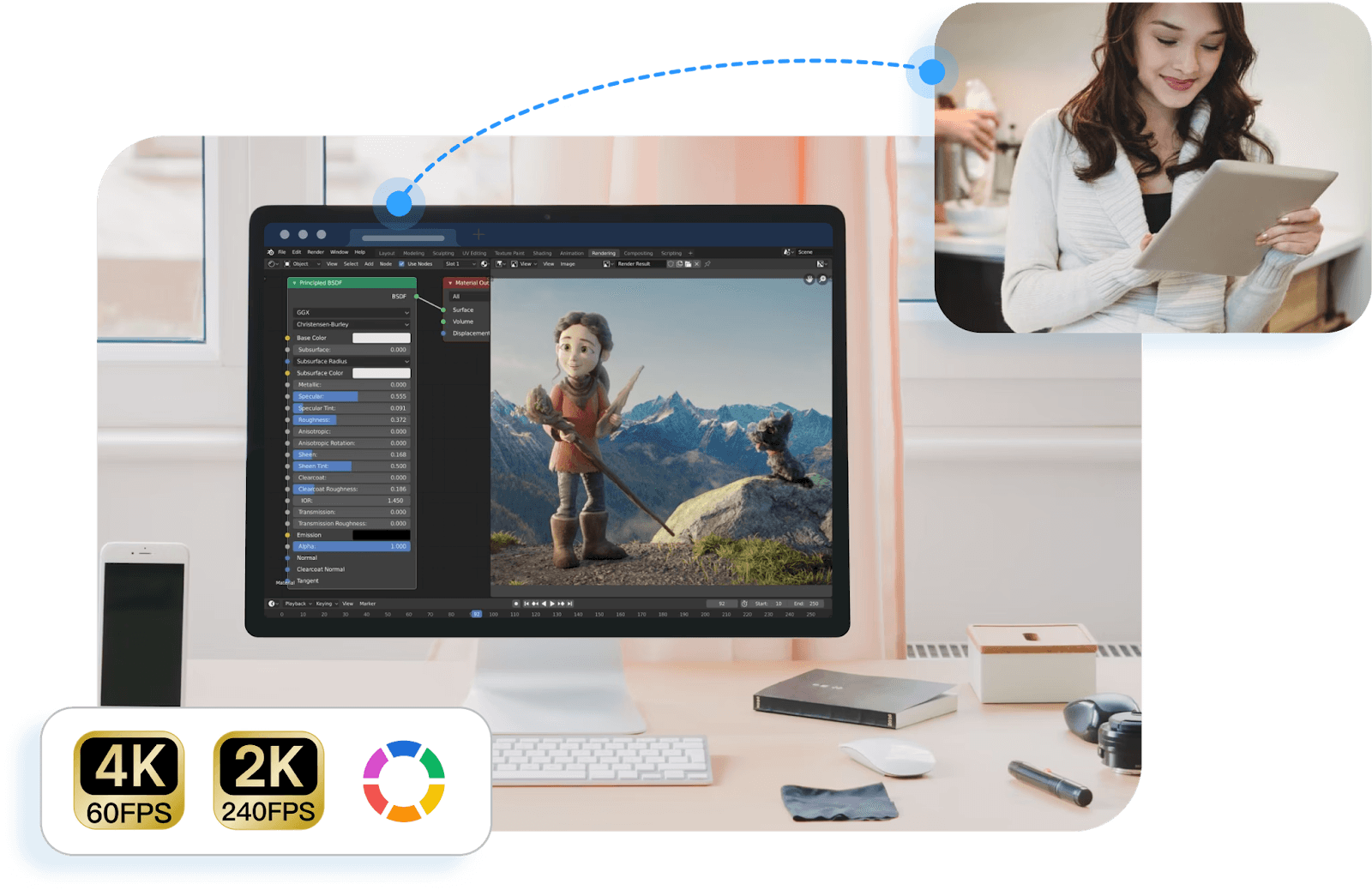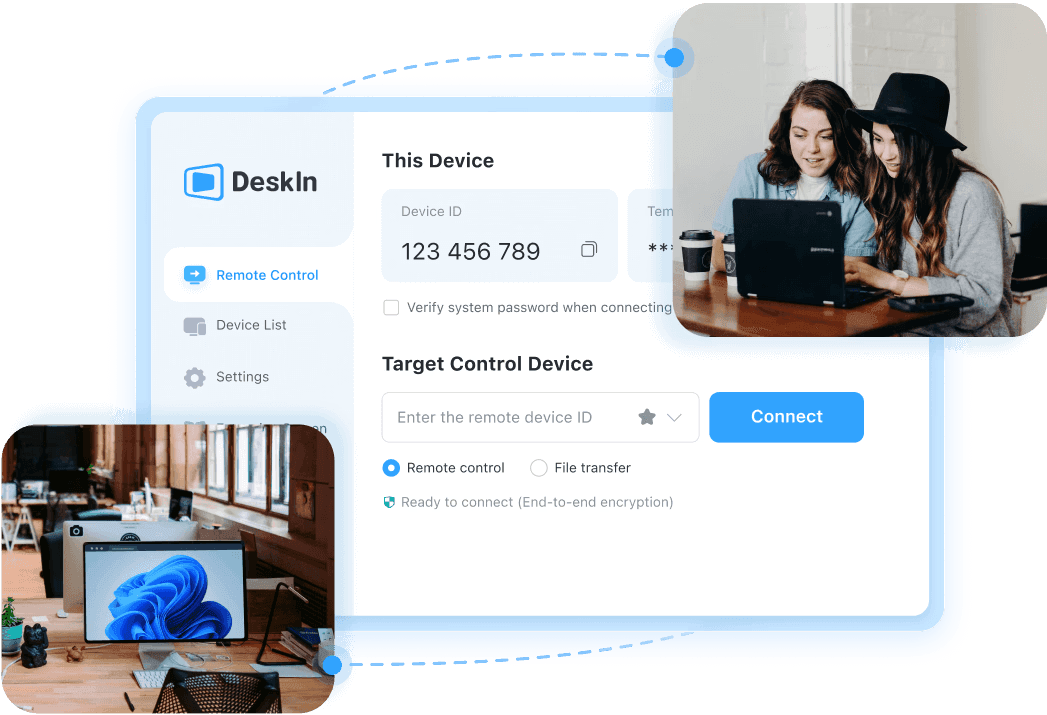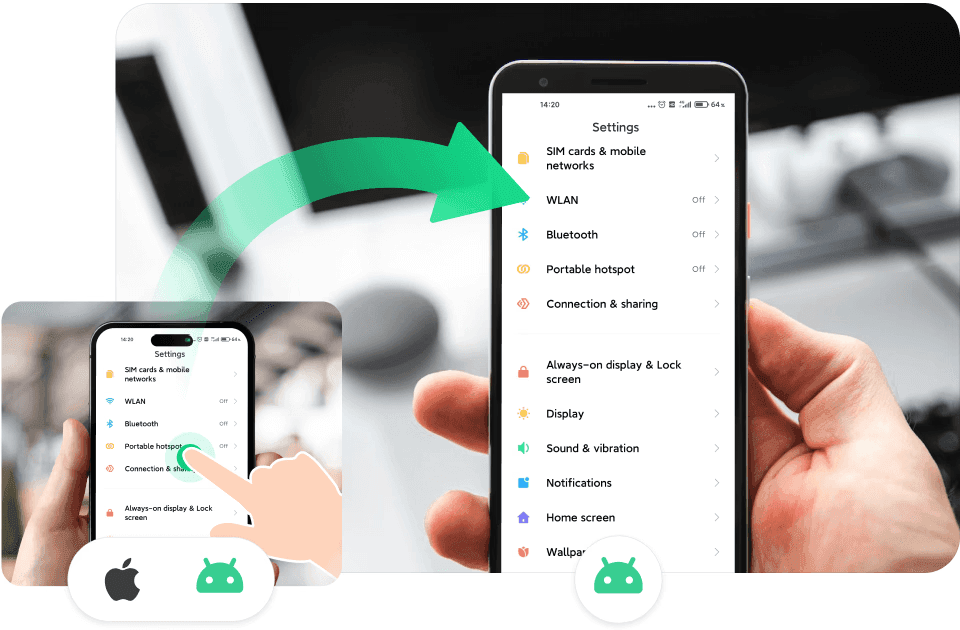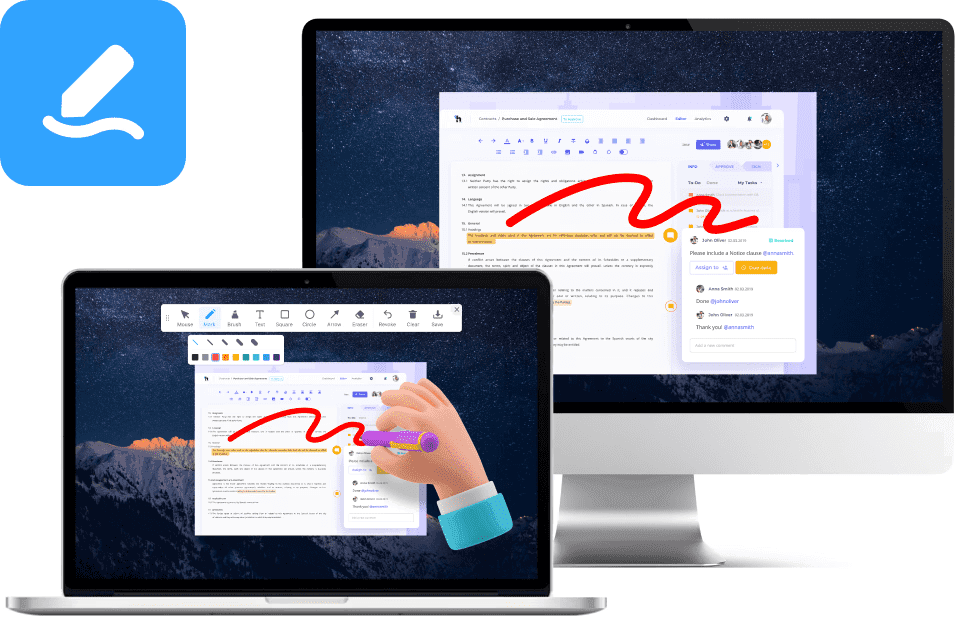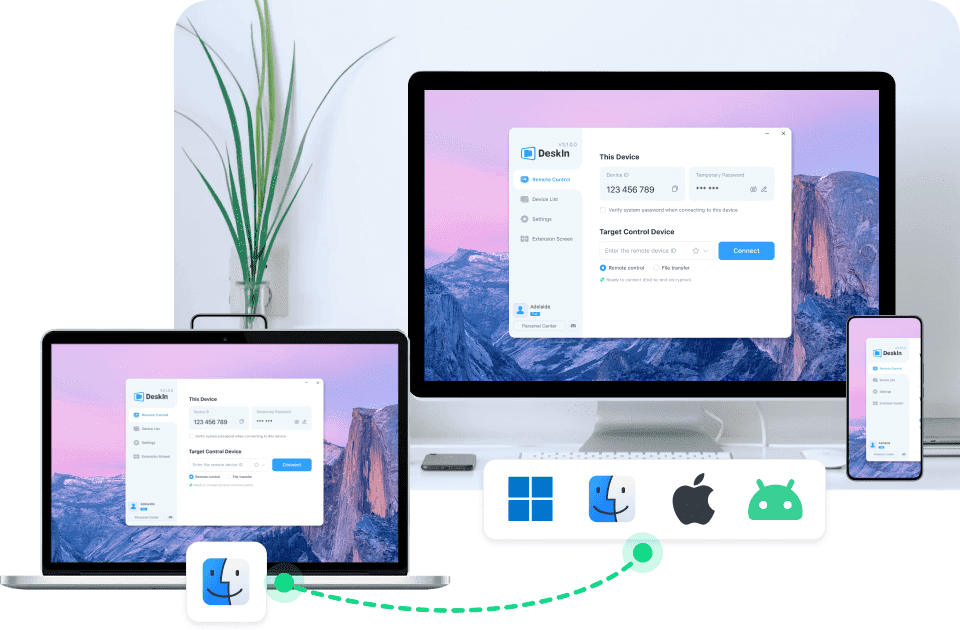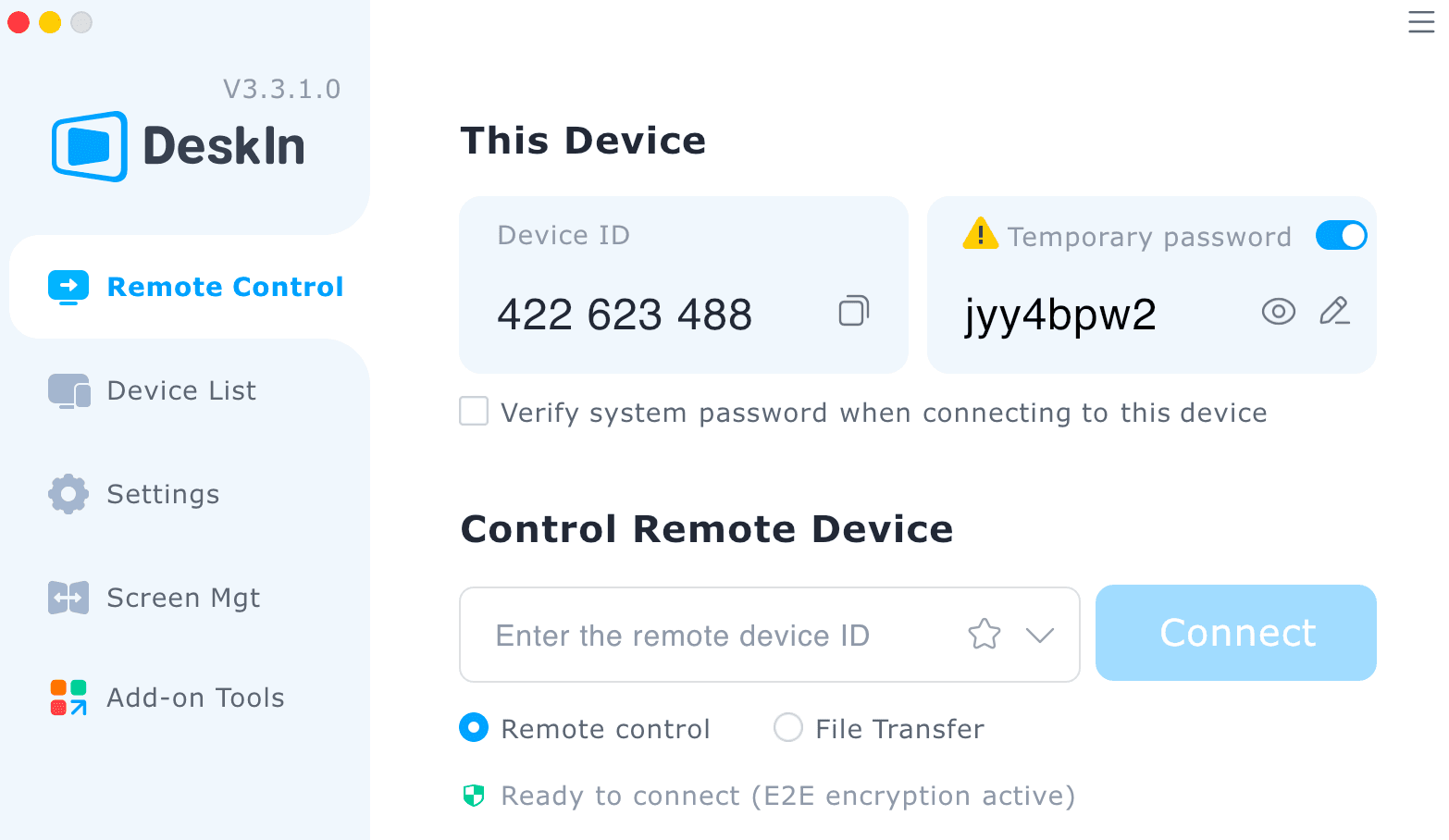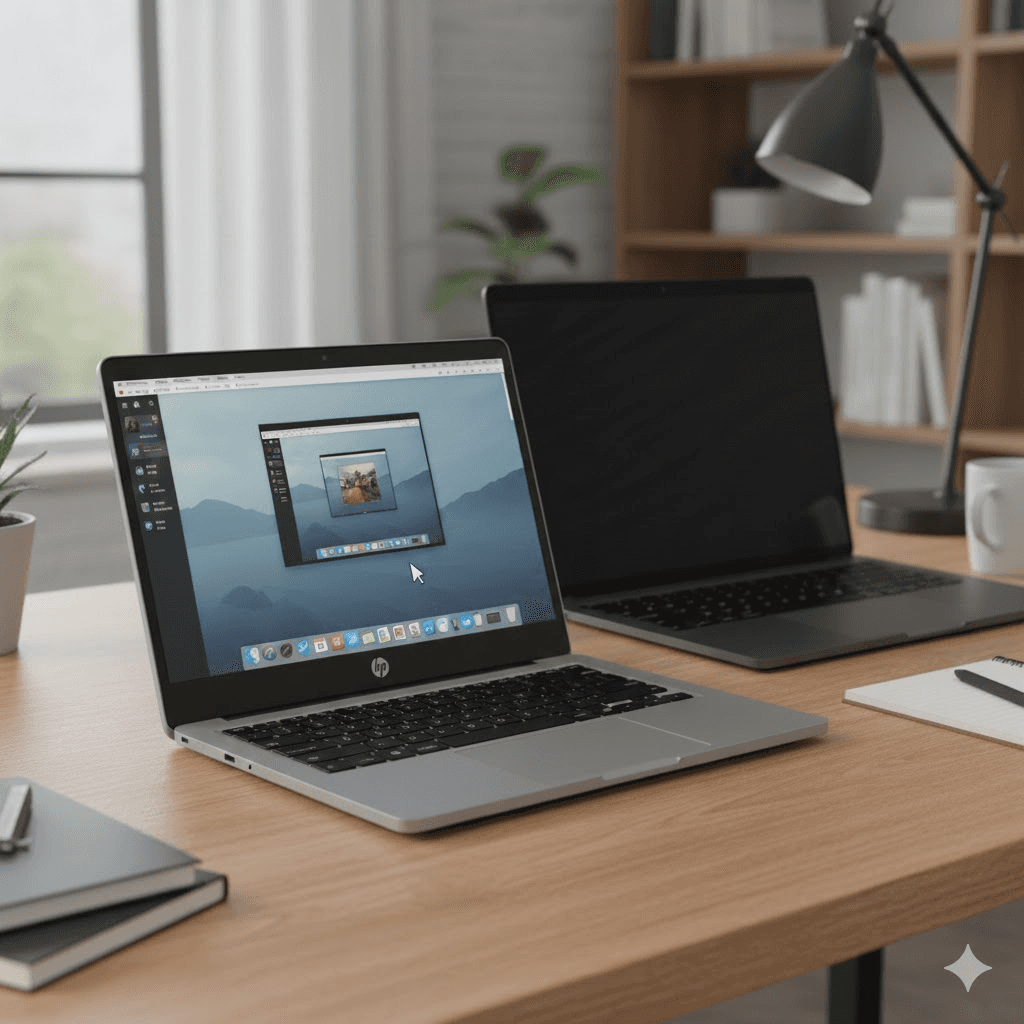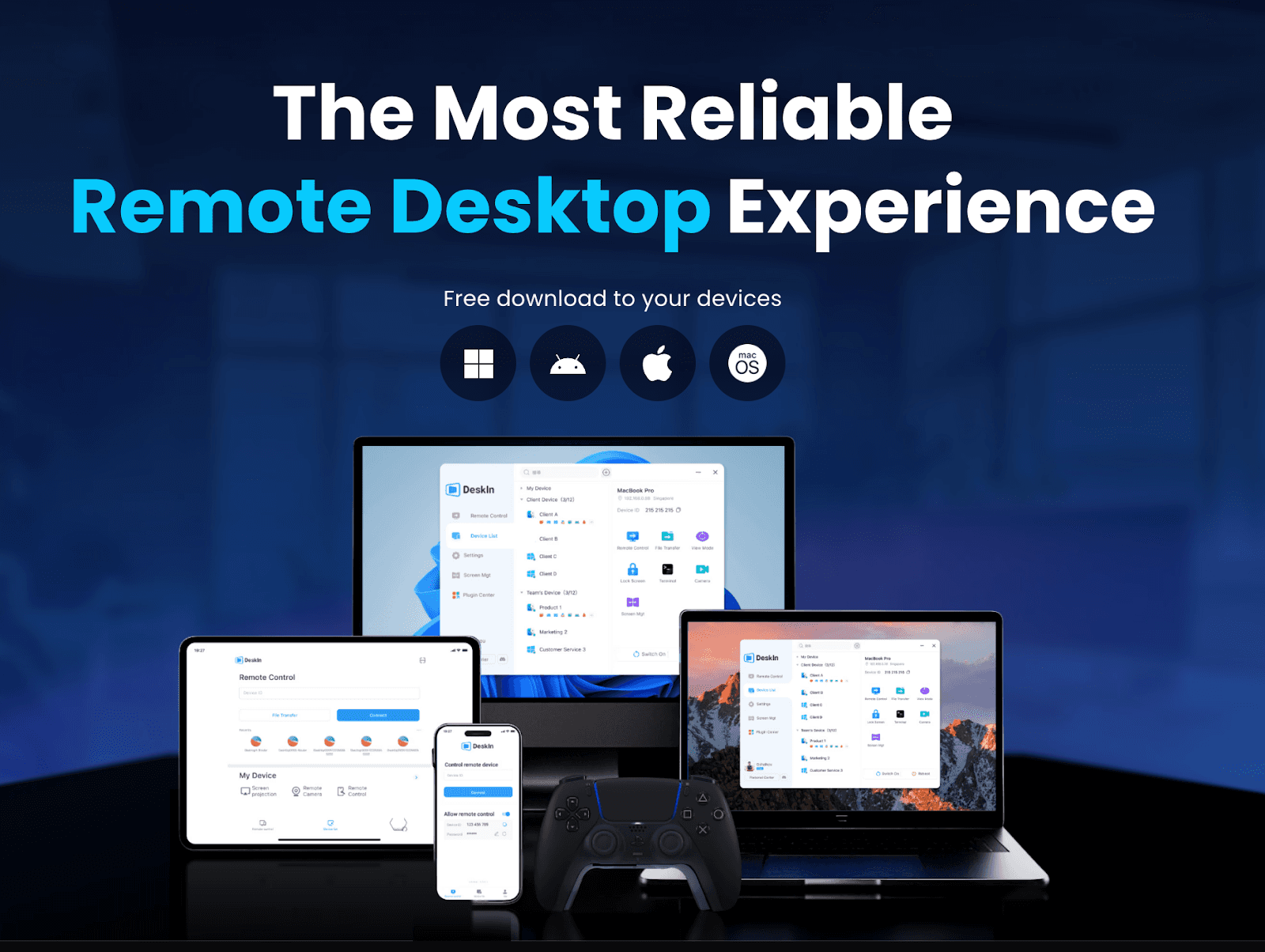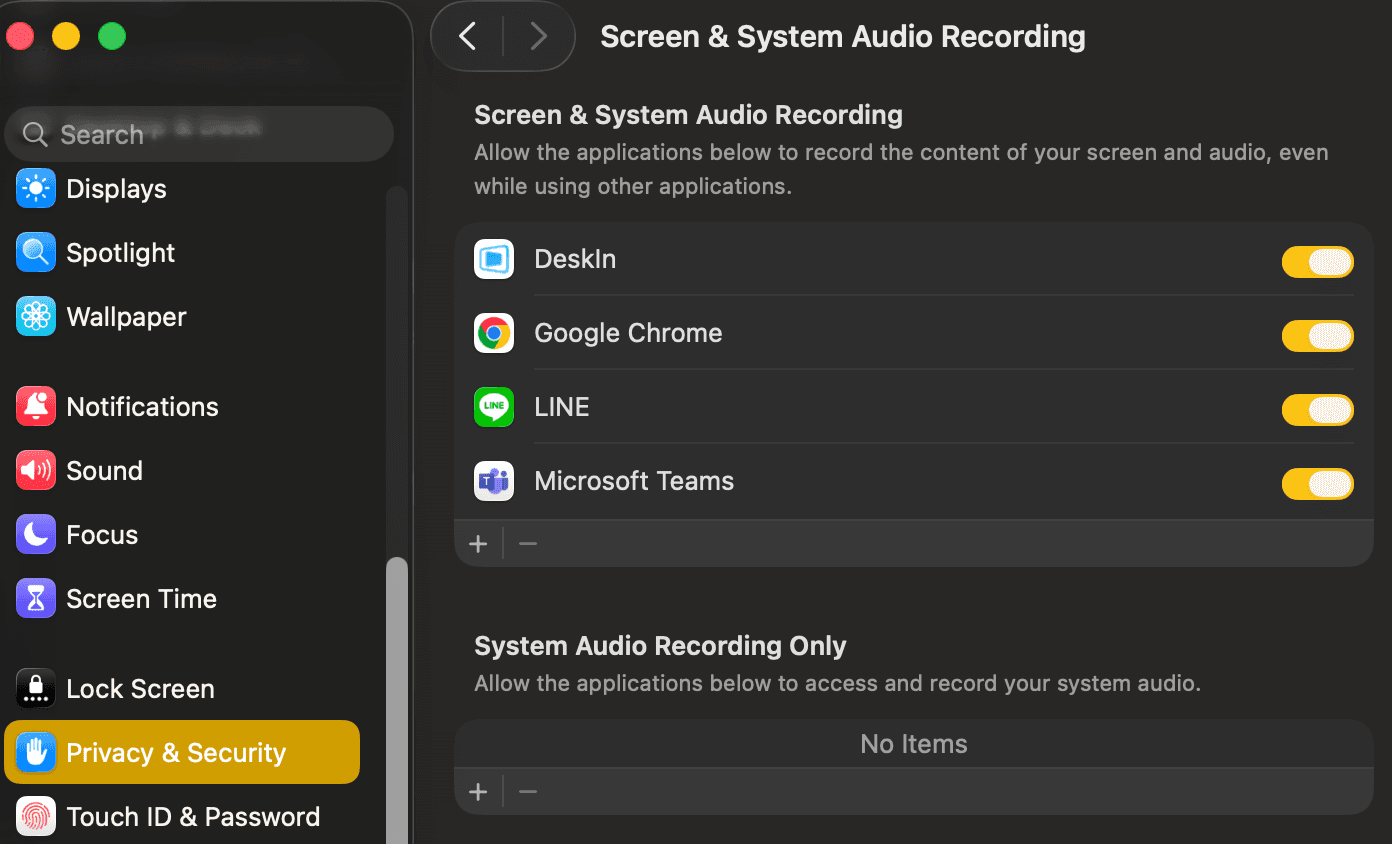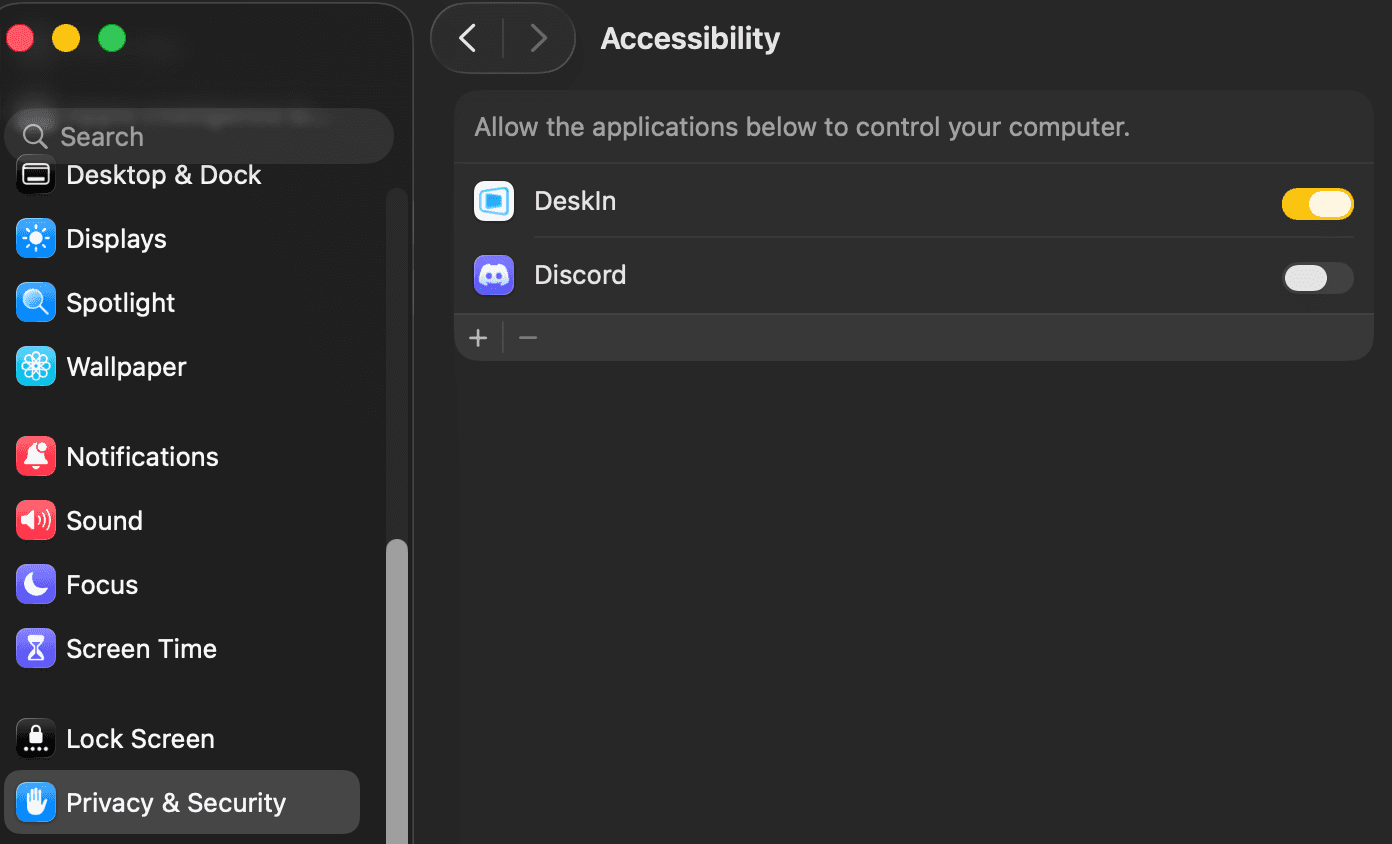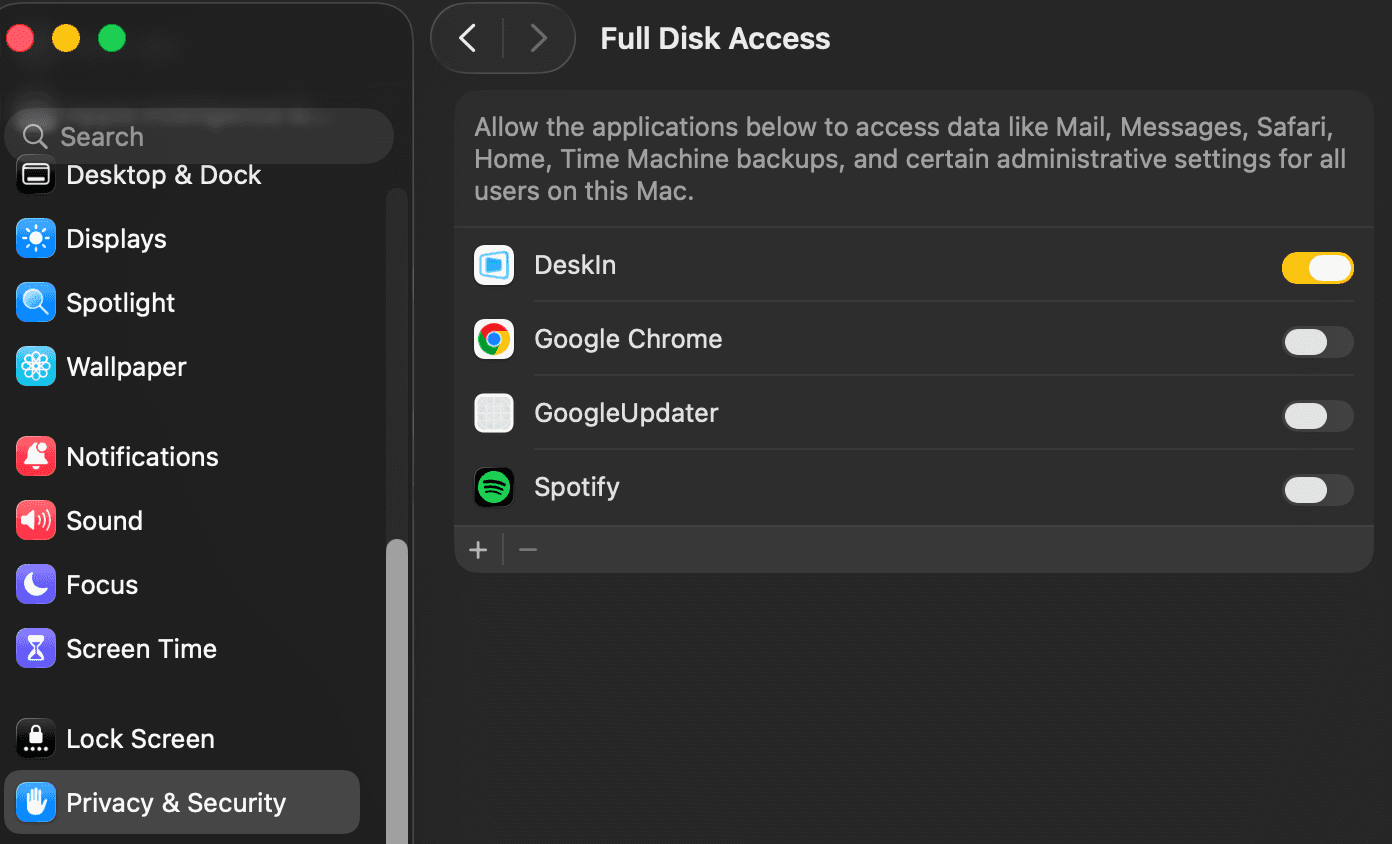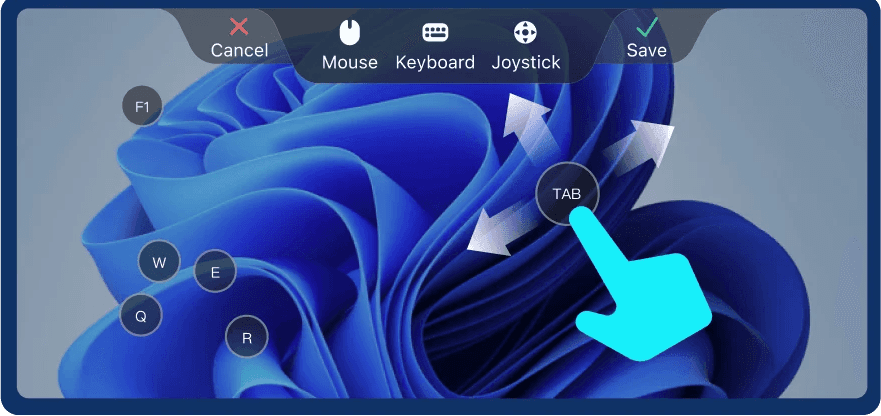Whether you're a digital nomad hopping between cafes, a student needing to access design software during class, or a remote worker troubleshooting an office computer from home, a reliable iPhone remote control app can be a lifesaver to stay productive, even when away from your desk.
But not all apps are created equal. Some lag during video playback, while others limit file transfers or restrict features behind paywalls. To help you find the right solution that balances performance and affordability, we've rounded up the top 5 iPhone remote control apps, including both free and premium options, tested for stability, speed, and usability. Don't you want to waste time picking the Best iPhone Remote Control App? Trust me, it will be your best partner!

👍 More to Explore:
How to Choose the Remote Control App for iPhone?
Before jumping into our top picks, it's important to understand what makes an iPhone remote desktop app truly reliable. Whether you're looking for it for casual use, business purposes, or even gaming, these key factors will help you make an informed decision.
Cross-Platform Compatibility: Make sure the app supports both macOS and Windows if you work across multiple systems. The best remote desktop apps for iPhone offer flexible access regardless of your desktop OS.
Connection Stability & Performance: Look for apps with low latency, high frame rates, and stable connectivity, even on weak or mobile networks. This is especially critical for users who want to control their desktops during travel or while using public Wi-Fi or mobile data.
Ease of Use: The user interface should be intuitive and mobile-optimized. You shouldn't need a manual just to connect your iPhone to your PC or Mac.
Security & Privacy: Prioritize apps with strong encryption, multi-factor authentication, and privacy options like screen masking or session timeouts, especially if you're accessing sensitive files or remote systems.
File Transfer & Control Features: A good app should do more than just screen mirroring. It should let you transfer files between devices, use touch gestures or game controllers, and even interact with peripheral devices if needed.
Cost and Licensing Flexibility: Some apps offer free versions with basic features, while others require subscriptions for full access. Consider whether you need a free iPhone remote control app for desktop, or if a premium tool better suits your needs in terms of performance and device limits.
Top 1. DeskIn (Best Overall!)
If you're looking for the best iPhone remote control app for desktop, DeskIn easily takes the top spot. Designed for creators, professionals, and remote workers alike, DeskIn offers high-speed, ultra-stable remote access, making it easy for you to access your Windows PC or remotely control your Mac from your iPhone. Whether you're editing a design file, accessing a business document, or even playing a PC game from your phone, DeskIn delivers an exceptionally smooth experience.
What sets DeskIn apart is its powerful performance at an unbeatable price. Unlike many premium tools that limit features behind paywalls, DeskIn's free version already supports up to 3 devices and allows full commercial use. Its optimized infrastructure, powered by over 200 global relay nodes, ensures minimal latency, no session limits, and uninterrupted connectivity, even on weak networks like mobile hotspots or airplane Wi-Fi. This makes it the go-to remote app for iPhone users who prioritize reliability, performance, and cross-platform access.
With these sparkling features, DeskIn Remote Desktop is considered to be the best free remote desktop software overall. Here, we list a brief user guide for you to learn how to use it for easy remote control.
Step 1. Download DeskIn PersonalGo to DeskIn Personal Download and install the app on both your desktop (Windows or Mac) and your iPhone.

Step 2. Sign in and Link Your DevicesCreate a DeskIn account and sign in on both your iPhone and desktop. You'll receive an email verification to authorize new devices for added security.
Step 3. Start a Remote SessionOpen the app on your iPhone, use the device ID and password on the target PC/Mac to connect. Once finished, tap to start the remote control session instantly.

Step 4. Explore Advanced Features (Optional)Take advantage of DeskIn's extras, like transferring files across platforms, enabling virtual screens, mirroring displays, or remotely accessing design tools in full 4:4:4 color with gamepad support. Hurry up and experience the super features of DeskIn!

👍 Pros:
Provide a clean and easy-to-handle interface design.
High-performance remote control with 4K 60FPS/2K 144FPS support.
Smooth and stable connection, even on weak networks.
The free version supports 3 devices and commercial use.
Full platform compatibility: Windows, macOS, iOS, Android.
Advanced features: file transfer, screen mirroring, privacy screen, virtual display, and remote camera.
Cons:
Advanced features (e.g., 100+ device control) require an upgrade to paid plans.
Top 2. Windows App Mobile
Windows App Mobile by Microsoft is a reliable remote control app for iPhone, built for accessing Windows desktops and virtual environments like Azure Virtual Desktop, Windows 365, and Microsoft Dev Box. Tailored for users in the Microsoft ecosystem, it offers a clean interface, secure encrypted connections, and essential remote functions like screen control, keyboard input, and file redirection. While stable and effective, it's primarily suited for business environments and lacks support for non-Windows devices or personal-use flexibility.
If you want something powerful and compatible, consider using DeskIn, which supports Windows, Mac, and mobile devices and is available in a variety of models.
However, it only supports remote access to Windows systems and requires a work or school Microsoft account, while personal accounts aren't supported. It lacks flexibility for casual users, such as support for macOS, Android, or iOS control, mobile-to-mobile access, or gaming-specific features.
👍 Pros:
Optimized for Azure Virtual Desktop, Windows 365, and RDS
Multi-monitor and display scaling support
Peripheral redirection, including audio, webcam, USB drives, etc.
Enhanced Microsoft Teams performance during remote sessions
Cons:
Only supports controlling Windows devices (no Mac or mobile device control)
Requires a work or school Microsoft account (personal accounts not supported)No advanced features like virtual screens, gaming support, or 4K streaming
Setup can be complex for non-technical users (especially Azure/RDS configurations)
Top 3. TeamViewer Remote Control
TeamViewer Remote Control is a well-established iPhone remote control app that enables users to access and control computers and other devices remotely. It's particularly useful for IT support, remote work, and assisting friends or family with technical issues. The app supports cross-platform connections, allowing iPhone users to connect to Windows, macOS, Linux, and Android devices.
It supports screen sharing, file transfer, chat functionality, and support for both attended and unattended access. Also, TeamViewer offers robust security measures, such as end-to-end encryption and two-factor authentication. However, TeamViewer lacks some advanced functionalities tailored for personal and creative use, and its price is relatively high, and the cost performance may not be that high.
Want a tool that offers advanced features but is also cost-effective? Click the download button here to experience DeskIn's great features!

👍 Pros:
Cross-platform compatibility (Windows, macOS, Linux, Android)
Secure connections with end-to-end encryption
Supports file transfer and chat during sessions
Available for free for personal use
Cons:
Cannot fully control iOS devices; limited to screen sharing
Some advanced features require a paid subscription, which is relatively expensive, especially for personal users
Free users may be mistakenly flagged for commercial use, resulting in session restrictions
Top 4. AnyDesk Remote Desktop for iOS
AnyDesk Remote Desktop is a versatile iPhone remote control app that allows users to access and control computers and other devices remotely. It's particularly useful for IT support, remote work, and assisting friends or family with technical issues. The app supports cross-platform connections, enabling iPhone users to connect to Windows, macOS, Linux, and Android devices.
Besides features like screen sharing, file transfer, session recording, and clipboard synchronization, AnyDesk also offers robust security measures, such as end-to-end encryption and two-factor authentication. However, it doesn't support advanced features like virtual screens, color-accurate remote design (4:4:4 true color), or high-FPS remote gaming. But these are features you can fulfill with DeskIn, so try it out.

👍 Pros:
Cross-platform compatibility (Windows, macOS, Linux, Android)
Secure connections with end-to-end encryption
Supports file transfer, session recording, and clipboard synchronization
Available for free for personal use
Cons:
Cannot fully control iOS devices; limited to screen sharing
Some advanced features require a paid subscription
Performance may vary depending on network conditions
Top 5. Splashtop Remote Desktop for iPhone
Splashtop Remote Desktop for iPhone is a powerful iPhone remote control app designed to provide seamless access to your computers, whether you're at home, the office, or on the go. It supports cross-platform connections, allowing users to connect to Windows, macOS, and Linux devices directly from their iPhone. Splashtop is particularly popular for both personal and professional use, offering robust features like high-quality streaming and secure remote access.
Besides basic remote control functions, Splashtop offers solid security with AES-256 encryption and multi-factor authentication, ensuring your data remains safe while you're working remotely. The app also includes a simple interface that makes it easy for users of all levels to navigate. However, similar to other remote desktop apps, Splashtop has limits for mobile-to-mobile control and creative functionalities like color accuracy in design.
If you're a designer or anyone else who demands color accuracy, then you should try DeskIn's 4:4:4 True Color and say goodbye to color distortion.

👍 Pros:
Connects seamlessly to Windows, macOS, and Linux devices from your iPhone.
Offers low-latency, high-quality streaming for smooth remote access.
Enables easy file transfer between devices.
Allows you to print remotely from your iPhone.
AES-256 encryption and multi-factor authentication protect your data.
Cons:
Unlike DeskIn, it doesn't support mobile-to-mobile control or full device sharing between phones.
Does not support color-accurate remote design or 4:4:4 true color like DeskIn.
It doesn't provide high-FPS remote gaming support as DeskIn does.
Comparison: Which iPhone Remote App is the Best?
When choosing the best iPhone remote control app for desktop, it's essential to consider factors like platform compatibility, security, ease of use, and advanced features such as gaming or design support. Here's a quick comparison of the five top apps discussed.
Feature/App | DeskIn | Windows App Mobile | TeamViewer | AnyDesk | Splashtop |
|---|---|---|---|---|---|
Platform Compatibility | Windows, Mac, iOS, Android | Windows only | Windows, macOS, Linux, Android | Windows, macOS, Linux, Android | Windows, macOS, Linux |
Security | AES-256 encryption, 2FA | Encrypted connections, enterprise authentication | End-to-end encryption, 2FA | End-to-end encryption, 2FA | AES-256 encryption, 2FA |
Mobile-to-Mobile Control | Yes | No | No | No | No |
Gaming Support | Yes, 4K/60FPS, custom controls | No | No | Yes, lower FPS | No |
File Transfer | Yes | Yes | Yes | Yes | Yes |
Remote Printing | Yes | No | Yes | Yes | Yes |
HD Video & Audio Streaming | Yes | Yes | Yes | Yes | Yes |
Ease of Use | Very user-friendly | Simple but limited for non-business use | Simple and intuitive | Simple and intuitive | Easy to navigate |
Free Version Available | Yes | No | Yes | Yes | Yes |
By weighing these factors, you can select the app that best fits their specific needs, whether it's gaming, work, or simple remote access.
Final Verdict
After comparing the top iPhone remote control apps, DeskIn stands out as the best overall choice. It offers the most comprehensive features, including mobile-to-mobile control, high-quality gaming support, and cross-platform compatibility. Whether for personal or professional use, DeskIn provides a seamless and secure remote access experience. While other apps also have their strengths, DeskIn's versatility, user-friendly interface, and advanced functionality make it the top recommendation for most users.

Whether you're a digital nomad hopping between cafes, a student needing to access design software during class, or a remote worker troubleshooting an office computer from home, a reliable iPhone remote control app can be a lifesaver to stay productive, even when away from your desk.
But not all apps are created equal. Some lag during video playback, while others limit file transfers or restrict features behind paywalls. To help you find the right solution that balances performance and affordability, we've rounded up the top 5 iPhone remote control apps, including both free and premium options, tested for stability, speed, and usability. Don't you want to waste time picking the Best iPhone Remote Control App? Trust me, it will be your best partner!

👍 More to Explore:
How to Choose the Remote Control App for iPhone?
Before jumping into our top picks, it's important to understand what makes an iPhone remote desktop app truly reliable. Whether you're looking for it for casual use, business purposes, or even gaming, these key factors will help you make an informed decision.
Cross-Platform Compatibility: Make sure the app supports both macOS and Windows if you work across multiple systems. The best remote desktop apps for iPhone offer flexible access regardless of your desktop OS.
Connection Stability & Performance: Look for apps with low latency, high frame rates, and stable connectivity, even on weak or mobile networks. This is especially critical for users who want to control their desktops during travel or while using public Wi-Fi or mobile data.
Ease of Use: The user interface should be intuitive and mobile-optimized. You shouldn't need a manual just to connect your iPhone to your PC or Mac.
Security & Privacy: Prioritize apps with strong encryption, multi-factor authentication, and privacy options like screen masking or session timeouts, especially if you're accessing sensitive files or remote systems.
File Transfer & Control Features: A good app should do more than just screen mirroring. It should let you transfer files between devices, use touch gestures or game controllers, and even interact with peripheral devices if needed.
Cost and Licensing Flexibility: Some apps offer free versions with basic features, while others require subscriptions for full access. Consider whether you need a free iPhone remote control app for desktop, or if a premium tool better suits your needs in terms of performance and device limits.
Top 1. DeskIn (Best Overall!)
If you're looking for the best iPhone remote control app for desktop, DeskIn easily takes the top spot. Designed for creators, professionals, and remote workers alike, DeskIn offers high-speed, ultra-stable remote access, making it easy for you to access your Windows PC or remotely control your Mac from your iPhone. Whether you're editing a design file, accessing a business document, or even playing a PC game from your phone, DeskIn delivers an exceptionally smooth experience.
What sets DeskIn apart is its powerful performance at an unbeatable price. Unlike many premium tools that limit features behind paywalls, DeskIn's free version already supports up to 3 devices and allows full commercial use. Its optimized infrastructure, powered by over 200 global relay nodes, ensures minimal latency, no session limits, and uninterrupted connectivity, even on weak networks like mobile hotspots or airplane Wi-Fi. This makes it the go-to remote app for iPhone users who prioritize reliability, performance, and cross-platform access.
With these sparkling features, DeskIn Remote Desktop is considered to be the best free remote desktop software overall. Here, we list a brief user guide for you to learn how to use it for easy remote control.
Step 1. Download DeskIn PersonalGo to DeskIn Personal Download and install the app on both your desktop (Windows or Mac) and your iPhone.

Step 2. Sign in and Link Your DevicesCreate a DeskIn account and sign in on both your iPhone and desktop. You'll receive an email verification to authorize new devices for added security.
Step 3. Start a Remote SessionOpen the app on your iPhone, use the device ID and password on the target PC/Mac to connect. Once finished, tap to start the remote control session instantly.

Step 4. Explore Advanced Features (Optional)Take advantage of DeskIn's extras, like transferring files across platforms, enabling virtual screens, mirroring displays, or remotely accessing design tools in full 4:4:4 color with gamepad support. Hurry up and experience the super features of DeskIn!

👍 Pros:
Provide a clean and easy-to-handle interface design.
High-performance remote control with 4K 60FPS/2K 144FPS support.
Smooth and stable connection, even on weak networks.
The free version supports 3 devices and commercial use.
Full platform compatibility: Windows, macOS, iOS, Android.
Advanced features: file transfer, screen mirroring, privacy screen, virtual display, and remote camera.
Cons:
Advanced features (e.g., 100+ device control) require an upgrade to paid plans.
Top 2. Windows App Mobile
Windows App Mobile by Microsoft is a reliable remote control app for iPhone, built for accessing Windows desktops and virtual environments like Azure Virtual Desktop, Windows 365, and Microsoft Dev Box. Tailored for users in the Microsoft ecosystem, it offers a clean interface, secure encrypted connections, and essential remote functions like screen control, keyboard input, and file redirection. While stable and effective, it's primarily suited for business environments and lacks support for non-Windows devices or personal-use flexibility.
If you want something powerful and compatible, consider using DeskIn, which supports Windows, Mac, and mobile devices and is available in a variety of models.
However, it only supports remote access to Windows systems and requires a work or school Microsoft account, while personal accounts aren't supported. It lacks flexibility for casual users, such as support for macOS, Android, or iOS control, mobile-to-mobile access, or gaming-specific features.
👍 Pros:
Optimized for Azure Virtual Desktop, Windows 365, and RDS
Multi-monitor and display scaling support
Peripheral redirection, including audio, webcam, USB drives, etc.
Enhanced Microsoft Teams performance during remote sessions
Cons:
Only supports controlling Windows devices (no Mac or mobile device control)
Requires a work or school Microsoft account (personal accounts not supported)No advanced features like virtual screens, gaming support, or 4K streaming
Setup can be complex for non-technical users (especially Azure/RDS configurations)
Top 3. TeamViewer Remote Control
TeamViewer Remote Control is a well-established iPhone remote control app that enables users to access and control computers and other devices remotely. It's particularly useful for IT support, remote work, and assisting friends or family with technical issues. The app supports cross-platform connections, allowing iPhone users to connect to Windows, macOS, Linux, and Android devices.
It supports screen sharing, file transfer, chat functionality, and support for both attended and unattended access. Also, TeamViewer offers robust security measures, such as end-to-end encryption and two-factor authentication. However, TeamViewer lacks some advanced functionalities tailored for personal and creative use, and its price is relatively high, and the cost performance may not be that high.
Want a tool that offers advanced features but is also cost-effective? Click the download button here to experience DeskIn's great features!

👍 Pros:
Cross-platform compatibility (Windows, macOS, Linux, Android)
Secure connections with end-to-end encryption
Supports file transfer and chat during sessions
Available for free for personal use
Cons:
Cannot fully control iOS devices; limited to screen sharing
Some advanced features require a paid subscription, which is relatively expensive, especially for personal users
Free users may be mistakenly flagged for commercial use, resulting in session restrictions
Top 4. AnyDesk Remote Desktop for iOS
AnyDesk Remote Desktop is a versatile iPhone remote control app that allows users to access and control computers and other devices remotely. It's particularly useful for IT support, remote work, and assisting friends or family with technical issues. The app supports cross-platform connections, enabling iPhone users to connect to Windows, macOS, Linux, and Android devices.
Besides features like screen sharing, file transfer, session recording, and clipboard synchronization, AnyDesk also offers robust security measures, such as end-to-end encryption and two-factor authentication. However, it doesn't support advanced features like virtual screens, color-accurate remote design (4:4:4 true color), or high-FPS remote gaming. But these are features you can fulfill with DeskIn, so try it out.

👍 Pros:
Cross-platform compatibility (Windows, macOS, Linux, Android)
Secure connections with end-to-end encryption
Supports file transfer, session recording, and clipboard synchronization
Available for free for personal use
Cons:
Cannot fully control iOS devices; limited to screen sharing
Some advanced features require a paid subscription
Performance may vary depending on network conditions
Top 5. Splashtop Remote Desktop for iPhone
Splashtop Remote Desktop for iPhone is a powerful iPhone remote control app designed to provide seamless access to your computers, whether you're at home, the office, or on the go. It supports cross-platform connections, allowing users to connect to Windows, macOS, and Linux devices directly from their iPhone. Splashtop is particularly popular for both personal and professional use, offering robust features like high-quality streaming and secure remote access.
Besides basic remote control functions, Splashtop offers solid security with AES-256 encryption and multi-factor authentication, ensuring your data remains safe while you're working remotely. The app also includes a simple interface that makes it easy for users of all levels to navigate. However, similar to other remote desktop apps, Splashtop has limits for mobile-to-mobile control and creative functionalities like color accuracy in design.
If you're a designer or anyone else who demands color accuracy, then you should try DeskIn's 4:4:4 True Color and say goodbye to color distortion.

👍 Pros:
Connects seamlessly to Windows, macOS, and Linux devices from your iPhone.
Offers low-latency, high-quality streaming for smooth remote access.
Enables easy file transfer between devices.
Allows you to print remotely from your iPhone.
AES-256 encryption and multi-factor authentication protect your data.
Cons:
Unlike DeskIn, it doesn't support mobile-to-mobile control or full device sharing between phones.
Does not support color-accurate remote design or 4:4:4 true color like DeskIn.
It doesn't provide high-FPS remote gaming support as DeskIn does.
Comparison: Which iPhone Remote App is the Best?
When choosing the best iPhone remote control app for desktop, it's essential to consider factors like platform compatibility, security, ease of use, and advanced features such as gaming or design support. Here's a quick comparison of the five top apps discussed.
Feature/App | DeskIn | Windows App Mobile | TeamViewer | AnyDesk | Splashtop |
|---|---|---|---|---|---|
Platform Compatibility | Windows, Mac, iOS, Android | Windows only | Windows, macOS, Linux, Android | Windows, macOS, Linux, Android | Windows, macOS, Linux |
Security | AES-256 encryption, 2FA | Encrypted connections, enterprise authentication | End-to-end encryption, 2FA | End-to-end encryption, 2FA | AES-256 encryption, 2FA |
Mobile-to-Mobile Control | Yes | No | No | No | No |
Gaming Support | Yes, 4K/60FPS, custom controls | No | No | Yes, lower FPS | No |
File Transfer | Yes | Yes | Yes | Yes | Yes |
Remote Printing | Yes | No | Yes | Yes | Yes |
HD Video & Audio Streaming | Yes | Yes | Yes | Yes | Yes |
Ease of Use | Very user-friendly | Simple but limited for non-business use | Simple and intuitive | Simple and intuitive | Easy to navigate |
Free Version Available | Yes | No | Yes | Yes | Yes |
By weighing these factors, you can select the app that best fits their specific needs, whether it's gaming, work, or simple remote access.
Final Verdict
After comparing the top iPhone remote control apps, DeskIn stands out as the best overall choice. It offers the most comprehensive features, including mobile-to-mobile control, high-quality gaming support, and cross-platform compatibility. Whether for personal or professional use, DeskIn provides a seamless and secure remote access experience. While other apps also have their strengths, DeskIn's versatility, user-friendly interface, and advanced functionality make it the top recommendation for most users.


Play x Work
All at Once
DeskIn Remote Game
only $14.32 USD 🎉 Limited on July 16-31
Add promo code: deskinsummer1






